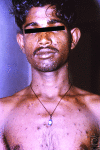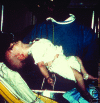Bioterrorism: preparing the plastic surgeon
- PMID: 22132252
- PMCID: PMC3223485
Bioterrorism: preparing the plastic surgeon
Abstract
Introduction: Many medical disciplines, such as emergency medicine, trauma surgery, dermatology, psychiatry, family practice, and dentistry have documented attempts at assessing the level of bioterrorism preparedness in their communities. Currently, there is neither such an assessment nor an existing review of potential bioterrorism agents as they relate to plastic surgery. Therefore, the purpose of this article is to present plastic surgeons with a review of potential bioterrorism agents.
Methods: A review of the literature on bioterrorism agents and online resources of the Centers for Disease Control and Prevention was conducted. Category A agents were identified and specific attention was paid to the management issues that plastic surgeons might face in the event that these agents are used in an attack.
Results: Disease entities reviewed were smallpox, anthrax, plague, viral hemorrhagic fever, tularemia, and botulism. For each agent, we presented the microbiology, pathophysiology, clinical presentation, potential for weaponization, medical management, and surgical issues related to the plastic surgeon.
Conclusion: This article is the first attempt at addressing preparedness for bioterrorism in the plastic surgery community. Many other fields have already started a similar process. This article represents a first step in developing evidence-based consensus guidelines and recommendations for the management of biological terrorism for plastic surgeons.
Figures





Similar articles
-
Bioterrorism web site resources for infectious disease clinicians and epidemiologists.Clin Infect Dis. 2003 Jun 1;36(11):1458-73. doi: 10.1086/374560. Epub 2003 May 22. Clin Infect Dis. 2003. PMID: 12766842
-
Recognition and management of bioterrorism infections.Am Fam Physician. 2003 May 1;67(9):1927-34. Am Fam Physician. 2003. PMID: 12751654 Review.
-
Clinical and pathologic differential diagnosis of selected potential bioterrorism agents of interest to pediatric health care providers.Clin Lab Med. 2006 Jun;26(2):329-44, viii. doi: 10.1016/j.cll.2006.03.005. Clin Lab Med. 2006. PMID: 16815456 Review.
-
Preparedness for a bioterrorism event in Alaska. Part 1: Detection and identification of a biologic event.Alaska Med. 2000 Oct-Dec;42(4):101-13. Alaska Med. 2000. PMID: 14593880
-
Confronting bioterrorism: physicians on the front line.Mayo Clin Proc. 2002 Jul;77(7):661-72. doi: 10.4065/77.7.661. Mayo Clin Proc. 2002. PMID: 12108604 Review.
Cited by
-
Bioterrorism education effect on knowledge and attitudes of nurses.J Emerg Trauma Shock. 2013 Apr;6(2):78-82. doi: 10.4103/0974-2700.110747. J Emerg Trauma Shock. 2013. PMID: 23723614 Free PMC article.
References
-
- Derbes VJ. De Mussis and the great plague of 1348: a forgotten episode of bacteriological war. JAMA. 1996;196:59–62. - PubMed
-
- Stearn EW, Stearn AE. The Effect of Smallpox on the Destiny of the Amerindian. Boston, MA: Bruce Humphries; 1945.
-
- Gursky E, Inglesby TV, O'Toole T. Anthrax 2001: observations on the medical and public health response. Biosecur Bioterror. 2003;1(2):97–110. - PubMed
-
- Henderson DA, Inglesby TV, Bartlett JC, et al. Smallpox as a biological weapon: medical and public health management. JAMA. 1999;281(22):2127–37. - PubMed
LinkOut - more resources
Full Text Sources
